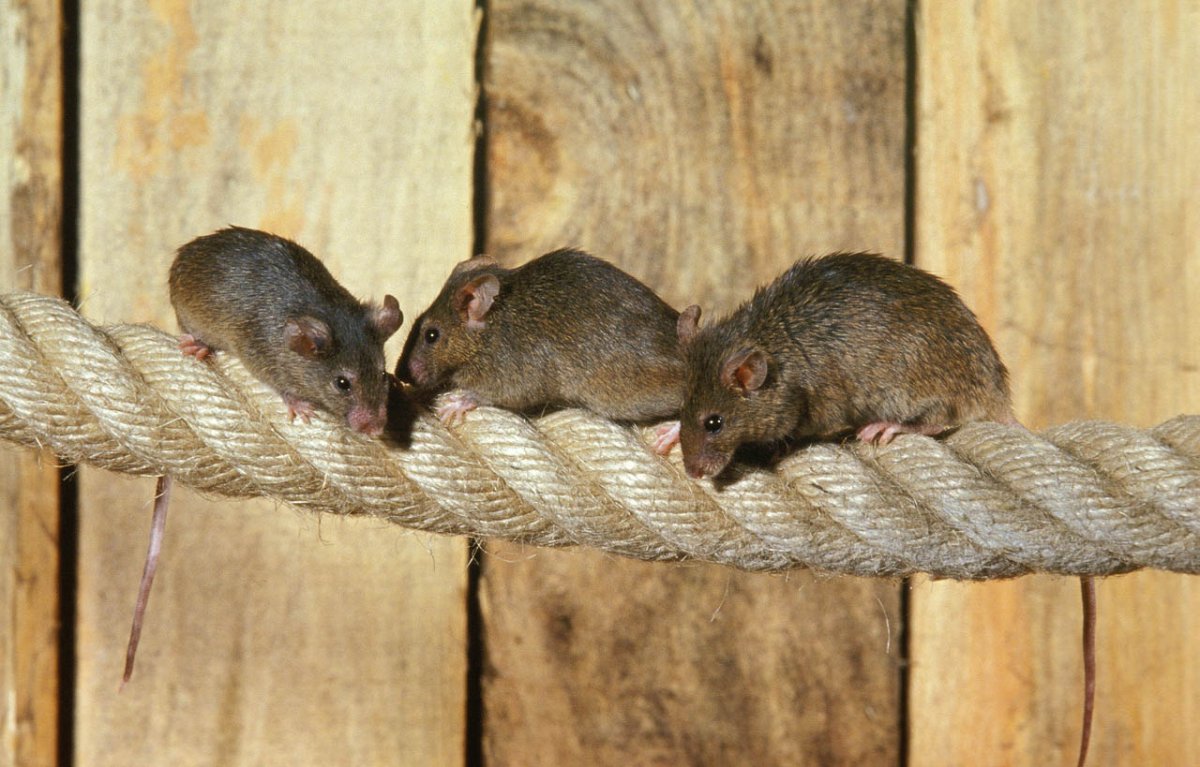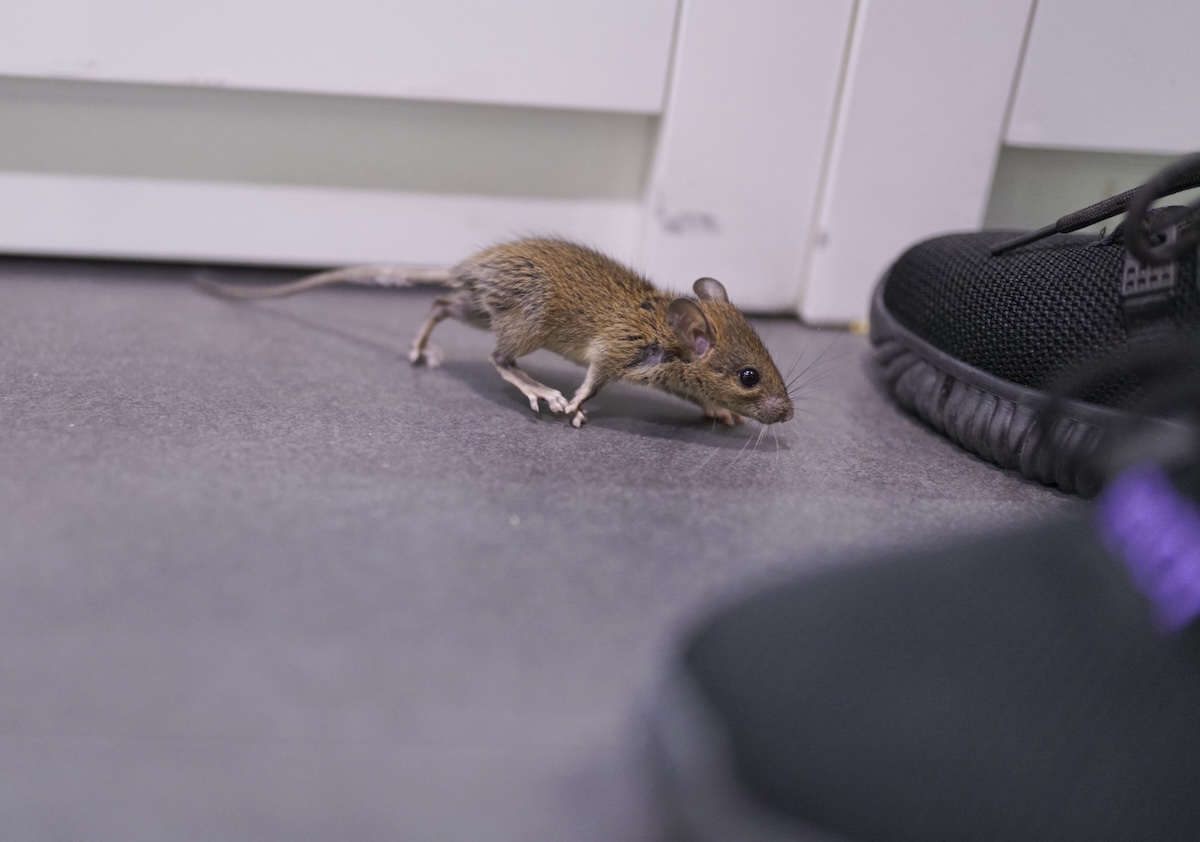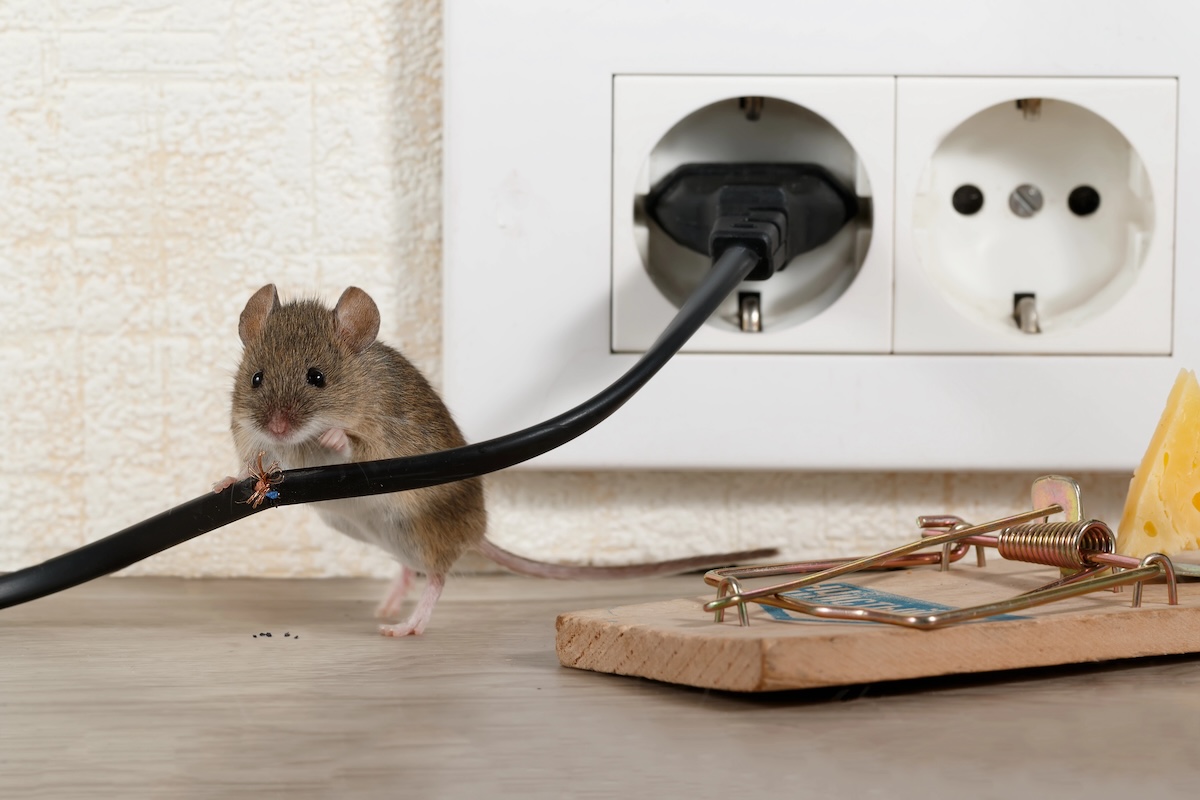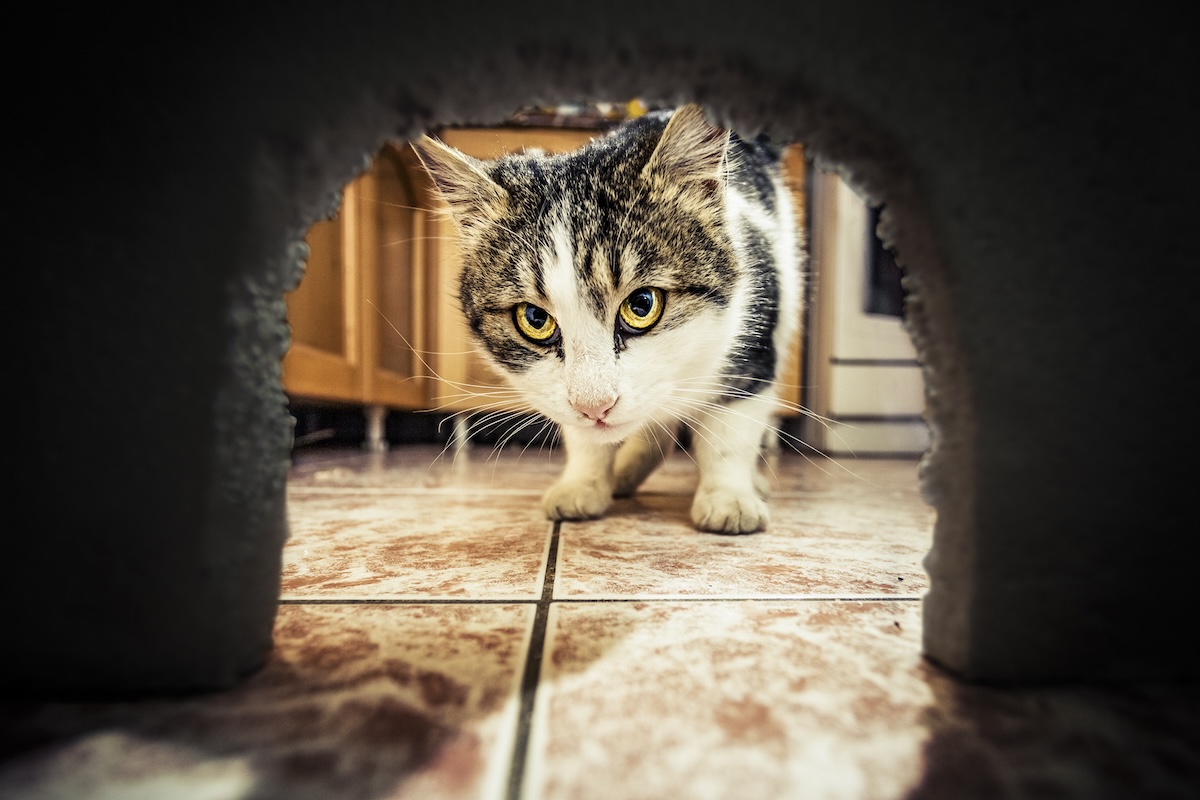

We may earn revenue from the products available on this page and participate in affiliate programs. Learn More ›
Spotting a mouse inside your home may not seem like a big deal at first. But chances are, that one mouse isn’t alone. Mice are social creatures that reproduce quickly and tend to live in groups, which means a single sighting could signal a much larger problem hiding behind your walls. So if you see one mouse, how many do you have?
To help homeowners understand what to look for and how to respond, we spoke with Blair Calder, rodent control expert and president of Automatic Trap Company. In this guide, we look at what one mouse sighting could really mean, how to recognize the signs of an infestation, and what steps you can take to keep your home mouse-free.
How Many Mice Are We Talking?
The short answer? Probably more than you think. “There’s no such thing as having one mouse,” says Calder, “If you see one, there are literally dozens more.” Mice rarely travel solo, and spotting one out in the open is usually a sign that others are nesting nearby, possibly behind walls, under floors, or in attic spaces.
However, the context of your sighting matters. Certain clues, like the time of day you saw the mouse, recent changes in weather, or how much evidence they’ve left behind, can help you gauge whether you’re dealing with a new visitor or a full-blown infestation.
Time of Day
Mice are nocturnal, so seeing one during the day can be a red flag. It often means the nest is either overcrowded or food sources are scarce, which forces them to take bigger risks. A daytime sighting usually points to a larger and more active population.
Weather Changes
Seasonal shifts, especially a drop in temperature or heavy rain, can drive mice indoors in search of warmth and shelter. If you spot a mouse after a sudden cold snap, it could mean they’ve just moved in—and might still be exploring entry points and food sources.
Amount of Droppings
One of the first and most telling signs of a larger problem is the amount of mouse droppings you find. Fresh droppings (small, dark, and about the size of a grain of rice) in multiple areas suggest regular activity. “Look for droppings—and if you hear scratching in the walls, you have mice,” Calder says.
Could It Just Be One Mouse?
While it’s technically possible that a single mouse wandered into your home, especially during a cold snap or in search of food or shelter, it’s not the most likely scenario. “If you see one, the chance of many others is 100 percent,” Calder notes. Mice are community-based animals, and they rarely travel or nest alone.
But if you’ve only seen one mouse and there’s minimal evidence, such as just a few droppings and no signs of scratching or nesting, you could be dealing with a recent arrival. Maybe the mouse slipped in through a gap in the garage or was fleeing a predator. But don’t assume it’s alone for long. Mice can reproduce rapidly, with females giving birth up to 10 times per year. So even if there is only one or two now, the situation can escalate quickly.
If you’re finding droppings regularly, hearing movement in the walls, or seeing signs of gnawing or nesting materials, you likely have more than a stray visitor. These are all signs of an established infestation—and a good reason to act quickly.
Signs of Mice in Your Home

Even if you haven’t seen a mouse scurry across the floor, there are several telltale signs that they’ve moved in. Mice are small, quiet, and excellent at hiding, but they leave behind clues—sometimes quite a few. From droppings and strange noises to chewed wires and nesting materials, here’s what to watch for if you suspect that you are sharing your home with a mouse family.
1. Mouse droppings
Those with a mouse infestation are likely to come across mouse droppings. Droppings are usually found in several places: near mice nests or where they live, near food sources, and around usual paths to and from the nest or food source.
Mouse droppings are very small cylindrical shapes that almost look like dark brown or black rice grains, and they’re pointed on both ends. These droppings can carry diseases like hantavirus or listeria, so it’s important to clean them up quickly and address a potential mouse problem as soon as possible.
2. Scratching in the walls
Even if physical evidence like mouse droppings isn’t present, scratching or rustling in the walls, especially after sunset, can be a sure sign that mice are in a home. Pets can also alert their owners to mouse infestations with their great hearing—if a dog or cat starts staring at, barking, or growling at walls for no apparent reason, trust their instincts and call in a professional to confirm suspicions.
Mice can squeeze through the tiniest holes to get to shelter and barely make a sound while doing so. An adolescent mouse can fit its body through a hole that’s the width of a pen. If a mouse sees a hole that’s not big enough, it will use its teeth to widen it and nest.
Why do mice take up residence in walls and air ducts? It all has to do with safety and security. Mice keep to low traffic areas and prefer darkness to bright or harsh light. As such, the small rodent finds safety from predators, an unimpeded way to get around to food and nesting supplies, and comforting darkness in the walls of a home.
3. Evidence of a mouse nest
As foragers, mice build nests out of what they can find around them. Mice are skilled at evading larger predators and foraging for food supplies, and can also chew through a large variety of building materials, including drywall, insulation, rubber, and even power lines.
If you scour your house (especially basements, garages, crawl spaces, and attics) and can’t find a mouse nest, it means the mouse or mice haven’t been in your home long enough to build one.
Mouse nests are made of materials like paper, cardboard, bits of insulation, and other soft materials. Looking for mouse droppings, bits of food, and urine can make finding a mouse nest easier.
Places mice like to nest are usually spots that are safe from predators (especially if a home has cats), are dry and warm (especially during the winter), offer ample nesting materials, and have easy access to a food source.
4. Bite marks

Mice constantly gnaw to keep their teeth from overgrowing, and they’re not picky about what they chew. If you notice bite marks on food packaging, shredded fabric or paper, or even frayed wires and damaged insulation, you may have a mouse problem. “Mice can fit into the tiniest gaps, and they’ll widen any small opening with their teeth to get where they want to go,” Calder says. Left unchecked, their chewing can cause serious structural damage or even increase the risk of electrical fires.
5. Foul odors
A strong, musty smell, especially in enclosed or low-traffic areas, can indicate an active infestation. The scent comes from mouse urine and is especially noticeable in areas where they’ve been nesting or frequently passing through. If the smell is strong and persistent, it could mean there’s a large or long-standing colony nearby. Dead mice hidden in walls or ducts can also emit a really strong odor, signaling a need for immediate removal.
6. Unusual pet behavior

Sometimes your pets will detect mice before you do. Dogs and cats have a keen sense of hearing and smell, and many will fixate on areas where they detect rodent activity. If your pet suddenly starts scratching, barking, staring, or sniffing intensely at baseboards, vents, or behind appliances, it’s worth investigating further. Calder recommends trusting your pet’s instincts: “If your dog or cat is paying close attention to a wall for no reason, there’s probably something on the other side of it.”
How to Prevent Mouse Infestations

The best way to deal with a mouse problem is to stop it before it starts. Mice are persistent, but there are several simple steps homeowners can take to make their homes less inviting (and less accessible) to rodents.
Here are a few effective prevention strategies:
- Seal entry points. Use steel wool or caulk to close gaps around pipes, vents, foundation cracks, and the sides of garage doors. “If there’s a tiny hole, they’ll find it,” Calder warns. A mouse can squeeze through a gap the size of a dime.
- Install weather stripping. Add it to door bottoms and garage doors to prevent mice from slipping in.
- Harvest gardens promptly. Ripe or rotting produce is like a buffet for rodents. Remove it quickly to avoid attracting mice.
- Store food properly. Keep dry goods in sealed containers and clean up crumbs or spills right away.
- Secure trash and compost. Use lidded bins and keep them away from the home’s foundation. Calder recommends storing trash cans in a garage or shed if possible.
- Declutter storage spaces. Cardboard boxes, piles of paper, and loose insulation are nesting goldmines for mice.
- Keep pet food sealed. Don’t leave food or water bowls out overnight, and store pet food in airtight containers.
How to Handle a Mouse Infestation
Although seeing one mouse may not always mean there’s a full-blown infestation, even a small number of mice can lead to big problems. Mice reproduce rapidly (one female can give birth every 20 days) and even a single mouse can leave behind dozens of droppings daily. Beyond the ick factor, these droppings can carry serious illnesses like hantavirus and listeria, which pose health risks to everyone in the household.
Mice also pose a physical threat to your home. “They’ll chew through drywall, insulation, and even power lines,” Calder says. In some cases, this kind of damage can lead to electrical fires or thousands of dollars in repairs.
If you’ve noticed signs like scratching in the walls, droppings near food sources, or even just one mouse running across the floor, it’s worth taking immediate action. Homeowners can start with humane, quick-kill traps, especially self-resetting models that can be placed both inside and outside the home. When in doubt, or if the signs point to a larger infestation, it’s best to bring in a professional pest control service to fully assess and address the problem.
A mouse-free home is not just cleaner—it’s safer and healthier for everyone inside.
